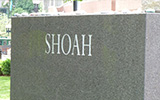
In 1994 Steven Spielberg, after directing the acclaimed film Schindler’s List, established the USC Shoah Foundation Institute for Visual History and Education (originally Survivors of the Shoah Foundation). During the next 20 years, the Foundation gathered audio-visual interviews with over 50,000 survivors of the Holocaust. These video testimonies have been compiled into the Visual History Archive, the largest collection of its kind in the world.
Each interview in the Visual History Archive averages 2.5 hours in length. The interviews provide unique first-person perspectives on the Holocaust and genocide. Other topics touched on during interviews include family life, religious practice, rescue and aid efforts, and post-Holocaust emigration. Many witnesses agreed to show photographs of family members and other artifacts relating to their experience.
Although the majority of interviews relate to the Holocaust, the Foundation also documents other 20th century examples of genocide, and the Visual History Archive contains interviews from survivors of the Armenian genocide during World War I, the 1937 Nanjing massacre, genocide in Guatemala from 1978-1996, and the 1994 genocide in Rwanda.
Each interview in the Visual History Archive has been indexed and segmented, making it possible to search across testimonies by topic, person, or geographic location. Although interviews were conducted in the interviewee’s native language, there is ongoing work to translate or transcribe interviews into English for ease of viewing.
Access to the Visual History Archive has been generously provided by the Georgetown University School of Foreign Service Library in Doha, Qatar. Note that the Archive requires users to establish a free account for full access -- just click the "Register" button on the home page to get started.
